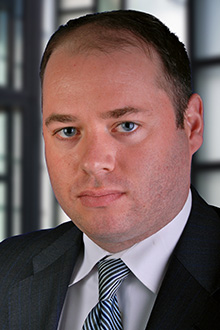Recent New York Appellate Victories

New York, N.Y. (October 22, 2020) - Lewis Brisbois' Appellate Team continues to secure significant appellate victories on behalf of our clients. This alert includes two recent wins from the New York Appellate Division, Second Department.
New York Appellate Court Upholds Summary Judgment Dismissal of Apartment Fire Wrongful Death Claim
New York Appellate Partner Nicholas P. Hurzeler and New York Partner Matthew P. Cueter recently won an appeal in New York’s Appellate Division, Second Department that affirmed summary judgment and dismissal of a premises action in which a young man died in an accidental fire in Brooklyn, New York in 2009. At one point, the plaintiffs’ attorneys demanded $20 million to settle the case.
Facts of the Case
In the underlying matter, a fire began in the early morning hours and consumed the plaintiffs’ apartment. The plaintiffs’ theory of liability centered on faulty wiring in the walls and electrical outlets. However, the Supreme Court, Kings County granted our motion for summary judgment, based largely on the reports and testimony of three fire marshals, as well as two fire origin experts, attesting that the fire likely started in the area of a space heater next to the bed, an area over which the defendant building owner exercised no control. The plaintiff countered with the affidavits of a professional engineer and electrical engineer, who examined the gutted apartment and opined that the wiring and fuses were defective. They claimed the fire could have started due to a short circuit, especially if the circuits were overloaded by various appliances. The plaintiffs argued that these expert affidavits presented a classic “battle of the experts” that could only be resolved by the jury, not the court on summary judgment.
Appeal
On appeal, the Second Department agreed with our position that the opinions of the plaintiffs’ experts had no probative value because they were speculative, conclusory, and unsupported by evidence. In particular, they were inconsistent with the evidence regarding the burn patterns, and the absence of arcing and beading that are the hallmarks of an electrical fire. The appellate court also rejected the plaintiffs’ argument that fire resulting from a space heater was a foreseeable consequence of the building owner’s failure to provide adequate heat during the winter.
Takeaway
Our takeaway from this decision is that summary judgment is not necessarily precluded merely because a plaintiff hires experts who disagree with the defendants’ theory of the case. Although a “battle of the experts” may appear to raise a triable issue at first glance, an expert opinion does not necessarily have probative value. It must be grounded in evidence, and not speculative. Thus, it is possible to obtain summary judgment even in the face of an adverse expert opinion, by carefully explaining to the court why the expert’s opinion is unsupported by evidence in the record. A copy of the Appellate Division’s decision can be seen here.
Appellate Court Upholds Dismissal of Labor Law 240(1) Action Based on Elusive “Sole Proximate Cause” Defense
New York Appellate Partner Nicholas P. Hurzeler, Partner Kenneth Kim, and Associate Kristen Carroll recently won summary judgment in a Labor Law action in New York’s Appellate Division, Second Department based on the “sole proximate cause” defense that is often argued, but rarely accepted by the courts.
Facts of the Case
The plaintiff fell off a scaffold and onto the sidewalk below in the course of an exterior renovation project. He sued the insured building owner pursuant to Labor Law 240(1), 241(6), 200, and for negligence. The plaintiff sustained spinal herniations and a knee injury meniscus tear that required arthroscopic surgery, and demanded three million dollars to settle the case. In the lower court, we argued that the plaintiff’s own negligence was the sole cause of the accident because he unilaterally decided to climb up scaffolding pipes from the sidewalk to the first level, rather than use a nearby ladder. We also argued that the plaintiff was a “recalcitrant worker” because he failed to follow his foreman’s example of using a ladder to climb up.
The Appeal
The plaintiff appealed, arguing that using the scaffolding pipes was an acceptable method of climbing up to the second level. He also contended that the scaffold was defective because it shifted and pinned his hand during the incident, causing him to lose his grip and fall to the sidewalk below. The plaintiff pointed out that where Labor Law 240(1) is violated, comparative fault is not a defense. He claimed that he was never specifically instructed to use the ladder, rather than climb up the horizontal pipes. The plaintiff also claimed that it would take too much time away from his work if he had to walk all the way around to the ladder, and that it was quicker to use the cross-braces instead.
The Appellate Division rejected the plaintiff’s arguments and agreed with our position that the plaintiff’s negligence was the sole proximate cause of the accident. In particular, we pointed out that the record did not reflect the plaintiff’s claims that he was never instructed to use the ladder. Further, the plaintiff had just used the ladder prior to the lunch break to ascend and descend from the second level above the sidewalk. There was also no evidence that using the scaffold cross-braces was an acceptable method of climbing up to the second level, and the plaintiff admitted using the ladder on numerous occasions prior to the incident. Further, we pointed out that based on the specific location of the ladder and the plaintiff’s exterior renovation work, it would not actually take longer to use the ladder. The appellate court agreed, and also dismissed the remaining causes of action, determining, for example, that the negligence claim had no merit because the defense ruled out any notice of a hazardous condition with respect to the scaffold’s cross-bracing.
Takeaway
The “sole proximate cause” defense is argued by the defense in almost every Labor Law 240(1) case, but is rarely successful. This case is a unique example of how specific evidence and facts can, on occasion, sway the court and trigger this elusive defense. The key is to elicit and then cite specific testimony on issues such as this plaintiff’s use of the ladder before lunch, the specifics of his conversation with the foreman after lunch, and the plaintiff’s prior work experience with similar types of ladders and scaffolds. Applying such methods can, on a rare occasion, allow the “sole proximate cause” defense to be accepted by the courts in a Labor Law 240(1) action. A copy of the Appellate Division’s decision can be seen here.
If you have any questions about this or any other matters, contact the attorneys involved directly. Visit our National Trial and Appellate Practice pages to learn more about our Trial & Appellate Team.
Author:
Nicholas P. Hurzeler, Partner
Editor:
Gregory S. Katz, Managing Partner - New York, NY

